Meena Kumari - The Tragedy Queen
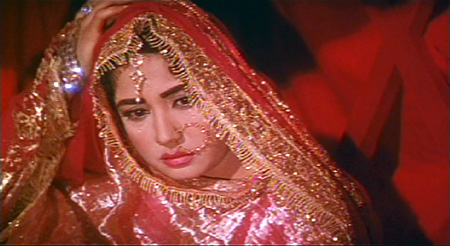
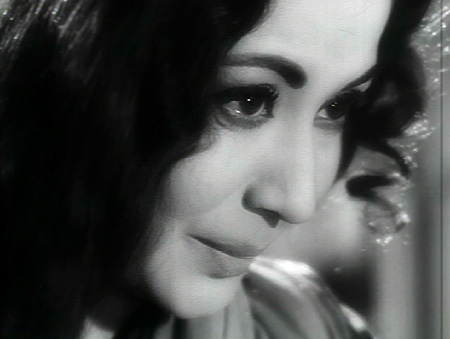
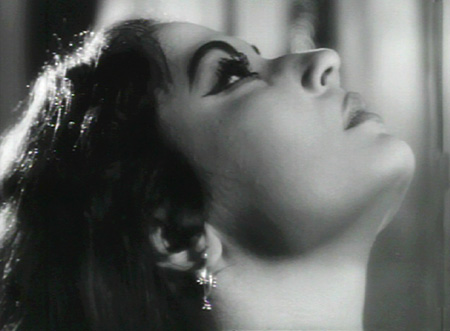
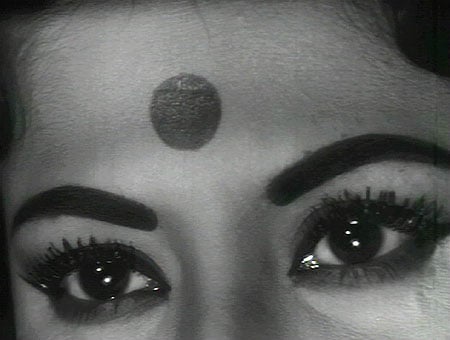
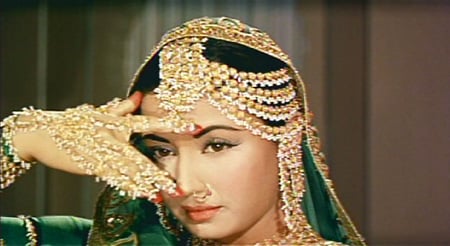
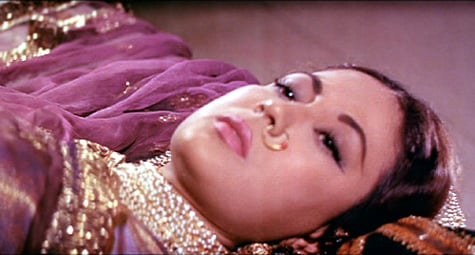
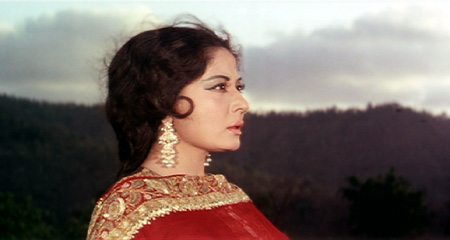
Bigg Boss 19: Daily Discussion Thread- 29th Sept 2025.
Bigg Boss 19-Daily Discussion Thread- 30th September, 2025
India Won Asia Cup 2025- Trophy Missing! Glory Without the Trophy?
Yeh Rishta Kya Kehlata Hai Sept 30, 2025 Episode Discussion Thread
101 ways to patau your pati
Trump's 100% tariff on Bollywood films
Bhagwan Ke Charnon Mein Swarg
Aishwarya Rai at the Paris fashion week
✦ Font-astic Voyage Contest Voting Round 1 | Invites ONLY ✦
What's next? (Multiple votes allowed)
The Pilot Pirates | Book Talk Reading Challenge 2025
Yeh Rishta Kya Kehlata Hai Oct 1, 2025 Episode Discussion Thread
Which faces u r fed up of watching
My Box Office Prediction for Sunny Ki....jo bhi hai.
Budget Single Digit : 7 cameo openings.
Swara Bhaskar..someone who dared to say it out loud #respect
True Face of BIAS & NEPOTISM!
👻 The Manuscript Marauders 👻 BookTalk Reading Challenge October 2025
DADI AS BOOTH 1.10
Meena Kumari - The Tragedy Queen







If anyone interested in her poetry, there is CD:
Meena Kumari - I Write , I Recite (Music CD)
by Meena Kumari
| Our Price: $17.50 USD </>Availability: Usually Ships in 1 to 2 business days ProductID: 11615 - Music CD Jewel Case - N/A Pages (Year: 04/2001) Universal ~ ISBN: CDNF480 |
I nver knew she was related to RabindraNath Tagore family, read this article:
| The sadness of being Meena Kumari | |
| Meena Kumari's original name was Mehjabeen. She changed her name when she became an actress. Very few people know that Meena Kumari was connected to the grand Rabindranath Tagore family. Meena Kumari's grandmother, Hem Sundari Thakur (Tagore) was married into the Tagore family but after she lost her husband Rev Bill, she was compelled to give up all her rights to the family name or property by her in-laws. The politically powerful and rich family of the Noble Laurate Rabindranath Tagore, were too powerful for her. Due to this sudden severance of connection, not many were aware of Hem Sundari's relationship with the Tagores. Hem's daughter Prabhawati was Meena Kumari's mother. Prabhawati too was a stage actress and a dancer. Her stage name was Kaamni. Prabhawati later got married to a Pathan called Ali Bux. He was a Sunni Muslim. He played the harmonium and wrote Urdu poetry. He was already married when he met Prabhawati. He composed music for small films like Shahi Lutere and also did some bit roles in films like Idd Ka Chand. Mehjabeen was born on August 1, 1932 in Dr Gadre's hospital in Mumbai. Her father Bux almost left her in a Muslim orphanage but went to pick her up again after a few hours. Bux was upset that his wife had given birth to another daughter. "I don't want to work in films. I want to go to school," was the first protest of Mehjabeen. What followed was an intriguing love-hate relationship that she always had with films. Though her father was against her doing films as he knew what went on inside those four walls of a producer's office, her mother pushed her into the industry as a means of livelihood. Her first role was as a child-artiste in Farzand-e-Watan (renamed Leather Face) by Vijay Bhatt of Prakash Studios. Her first ever scene didn't have lines. There was a scene in which a cat was supposed to lick her cheeks. She was terrified but the cat's tongue was less terrifying than the whip lashing words of her mother. Ali Bux, Meena's father, who was initially against his daughters joining films, became Meena's full time manager after she became a successful star. Once while returning from Mahableshwar in their Plymouth, Meena and her family met with a serious accident. And though three of them suffered injuries, Meena's were the worst. Her left hand was seriously injured, and doctors weren't sure if she would be able to use it again. No one knows how much damage was caused to her hand and how it looked after the surgery. Being very image conscious, Meena always hid her hand in her sari pallu, and viewers often tried spotting it. This only added to her charm. Released on Oct 5, 1952, Baiju Bawra became a hit. And she a star. The reviews were very good. The film ran for 100 weeks in Bombay. It did Silver, Golden and Diamond jubilees. From a heroine who had signed Anarkali for Rs. 15,000, her price immediately jumped to one lakh. After her accident since she was indisposed, Meena Kumari lost some good films to other actresses. Even one of her favourite films, Noor Jehan, slipped out of her hands. The film was instead made with a little known Asha Mathur, Kamal Kapoor and Pradeep Kumar but the film couldn't be completed. 12 years later Meena got to play Noor Jehan. During the shooting of Baiju Bawra, for the shooting of the song Tu Ganga ki Mauj, Meena Kumari was alone in a boat and from the shore and the camera. She wasn't looking at the direction she was going in, suddenly unit hands started shouting, but she couldn't hear them. She was excitedly rowing the boat, unaware of the fact that she was at the edge of a waterfall. A couple of unit hands who could swim, jumped into the water and started swimming towards her, luckily her boat was stopped by some boulders from going over. By then one of the unit hands had been able to reach her boat, and climb aboard. Only then she realized just how close to death she had come. Meena Kumari, once walked out of Mehboob Khan's film Amar, because she couldn't spare the dates for shooting. For a heroine to actually walk out on Dilip Kumar was akin to sacrilege in those days. But Meena Kumari was like that, she made her own rules and lived by them. She was also a poet. A couplet taken from one of her poems describes her perfectly: Dilsa jab saathi paaya bechaini bhi saath mili. (If I found a companion of my liking I found restlessness with it too). She kept longing for a perfect mate all her life. In her search for that soul mate she also made some very significant friends like Gulzar, Pradeep Kumar, Dharmendra. After receiving the Filmfare award for Kaajal from President Radhakrishnan, she had dined with him and conversed at length with him in her faltering English. Meena was very excited upon receiving a letter from the Pesident within a week of their meeting. She immediately wrote back to him, and didn't let anyone correct her language in the letter, as she had wanted him to know that she had written the letter on her own. The actress was also awed when she was looking out for a bungalow and found that the one suited her requirements was inhabited by Mahatma Gandhi in 1930. She was so excited by this that she made it a point to find out from the old gardner, where Bapuji used to sit, where he kept his charkha, where he used to meet his visitors and hold evening prayers etc. Meena Kumari did the bathing scene in Footpath much against the wishes of her husband Kamal Amrohi. Drinking and ill health took its toll on her career soon. At one point in time she was away from films for five years. Meena Kumari came back to work after that gap with Pakeezah. She was unwell even while the film was being shot. Meena Kumari rushed out of the sets and started crying when she couldn't dance on Thare rahiyo o banke yaar ve. "I can't do it... it is too late." Kamal Amrohi got Padma Khanna to do the song in place of Meena Kumari but of course in a ghunghat. Meena Kumari had a chat with Padma before the picturisation. The perfectionist that she was, she wanted Padma to walk like her in the music pieces. Padma had to practise for hours before she got the nod from Meena Kumari. Pakeezah released on February 4, 1972. The film was declared a flop. Three weeks after the release of the film, Meena Kumari fell seriously ill and on March 31, 1972, at 3.25 pm, she died. Pakeezah became a hit. |
Meena Kumari |
| Meena Kumari, traditionally known for perfecting the role of the tragedienne in films, is actually the embodiment of the woman as Essence rather than flesh. The droop of her kiss curl, the anguish-laden voice never more than a sob from abject despair, the unblemished beauty made her the ultimate tragedy queen in Indian Cinema. In a career spanning three decades, she chiselled the contours of two role models and created some kind of an ideal in the mind of the viewer. This was the image of the woman as wife and the woman as mother. Mahjabeen Ali Bux, her real name was was daughter of the Parsee theatre actor and music teacher Ali Bux and the dancer Iqbal Begum. Having hit upon hard times and living near Rooptara Studios, Ali Bux sought to get his daughters into films. She was renamed Baby Meena and cast in Vijay Bhatt's Leatherface (1939). She hit the big time with Vijay Bhatt's Baiju Bawra (1952). With Baiju Bawra, the suffering Indian Woman found a new face in Meena Kumari. The heroine in the film is ever ready to negate herself for the material and spiritual advancement of the man she loves and is even willing to annihilate herself to provide him the experience of pain so that his music would be enriched! It was a strong performance and fetched her the inaugural Filmfare Award for Best Actress. She became Film Director Kamal Amrohi's second wife and with Daera (1953), Ek Hi Rasta (1956), Sharda (1957) and Dil Apna Aur Preet Parayi (1960), Meena went from strength to strength playing the suffering woman, the martyr to perfection. In Daera, her barren life and subsequent disintegration underscores the Indian Woman's lack of selfhood and remains one of the great moments of screen acting. In Sharda she gave a tour de force performance as Raj Kapoor's lover who becomes his stepmother. Unfortunately coming in the same year as Mother India, Nargis swept all the awards but the Bombay Film Journalists Association named Meena as their best actress of the year for Sharda. In the few light-hearted films she did in between like Azaad (1955), Miss Mary (1957), Shararat (1959) and Kohinoor (1960), she displayed an uninhibitedness that was refreshing to say the least. In these films, her physical movements are free and unrestrained and her dialogue delivery absolutely normal - a stark contrast to the studied mannerisms and passive postures of her tragic roles. In Sahib Bibi Aur Ghulam, produced by Guru Dutt, the film tells the story of Choti Bahu, the youngest bride in an aristocratic zamindar family who strives to make her errant husband return to her even at the risk of self-destruction. It is perhaps the greatest performance ever on the Indian Screen. That year Meena made history as she garnered all the three Best Actress nominations for the Filmfare Award - For Aarti (1962), Main Chup Rahoongi (1962) and of course Sahib Bibi Aur Ghulam for which she won the award. While on the professional front, the emphatic success of Dil Ek Mandir (1963), Kajal (1965) and Phoor Aur Pathar (1966) kept her a top star, her marriage with Kamal Amrohi ended in 1964. Meena increasingly relied on the intimate kindness offered by younger men like Dharmendra and often dulled her senses with liquor. Her image grew in dimension as she was now widely seen as the eternal martyr. Meena spent the last years of her life playing the doomed diva. With heavy drinking she had lost her looks and she began playing character roles albeit strong ones in potboilers like Jawab (1970) and Dushman (1971). A talented poetess in her own right, she recorded a disc of her Urdu poems - I write, I recite. Thankfully her exquisite speaking voice remained intact. She came up with a strong portrayal of an old woman caught between two street gangs of frustrated, unemployed youth, whose killing finally makes them realize the futility of violence in Gulzar's directorial debut Mere Apne (1971) and realizing she had limited time left went out of her way to complete what has now become a cult classic- Pakeezah (1972). The film is a stylized, larger than life mythicization of the familiar tale of the prostitute with the heart of gold. Jointly planned by Meena and husband Amrohi in 1958, the film took 14 years to finally reach the silver screen. Filming had come to a halt when the couple split but Meena was now determined to complete it. There is grandeur in Amrohi's filmmaking-an epic magnitude of treatment. The evocative songs and the background music create the right period mood and Amrohi's eye for details brings great depth to the lavish sets. The film is helped by a stunning performance by Meena in the dual roles of the mother and daughter. Pakeezah finally released in February 1972 and opened to just a lukewarm response but after her death on 31st March 1972, the film went on to become a huge success at the box-office and has since then acquired legendary status and is regarded as her best known film. Gomti ke Kinare was her last film. |
Meena Kumari
The legend lives on
It was in tragedies that Meena Kumari triumphed. She could cry without using glycerine, a great achievement in acting. Regarded as the greatest tragedy queen of Indian cinema, she portrayed a unique blend of great sensitivity, pain, sacrifice and purity in her reel life. And there is a reason for this. It was because these tragedies pervaded her real life too, says Roshni Johar
MONTHS before her death Meena Kumari had written in an Urdu couplet, "I will leave this world alone, and then it will wait for me for centuries". Perhaps she had a premonition of her death.
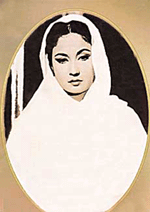 On March 31, 1972, Meena Kumari lay in Mumbai's St. Elizabeth Nursing Home. Life was ebbing from her. When asked her last wish, she whispered, "Ek umda paan". A very simple desire for a great actress. After some time, 40-year-old Meena Kumari was no more. She was covered with a white sheet, her favourite colour symbolising purity. Incidentally her last movie running at that time, was the unparalleled Pakeezah, meaning pure.
On March 31, 1972, Meena Kumari lay in Mumbai's St. Elizabeth Nursing Home. Life was ebbing from her. When asked her last wish, she whispered, "Ek umda paan". A very simple desire for a great actress. After some time, 40-year-old Meena Kumari was no more. She was covered with a white sheet, her favourite colour symbolising purity. Incidentally her last movie running at that time, was the unparalleled Pakeezah, meaning pure.
No one could give her the happiness she longed for. It was not in her destiny. Life had contrived to plunge her deep into melancholia from which no one could pull her out. Restlessness had also gripped her. She had once expressed, "Ek dhadka sa laga rehta hai dil ko hardam.... zist hamsaye se maanga hua zevar to nahin?"
Her childhood was far from normal. Born Mahajabeenara Begum on August 1, 1932, she was the second of the three daughters (others being Khurshid and Madhuri) of Iqbalbi (formally Prabhavati, a renowned dancer and stage artist) and Allahbaksh, a music director hailing from Sargoda, West Pakistan. No wonder acting came naturally to Meena Kumari. After Partition, poor Allahbaksh used to make daily rounds of Mumbai's studios to get his little daughter roles to make both ends meet. Christened Manju, she was given the screen name of (Baby) Meena Kumari.
Beginning her career as a four-year-old child star, Meena Kumari soared high to become a shining star of the Indian silver screen. Starting with the unknown Leather Face, she reached the pinnacle of glory with her swan song Pakeezah. She won laurels with Filmfare Awards for Baiju Bawra, Parineeta, Sahib, Bibi aur Ghulam and Kajaal.
Cinegoers were captivated by her enchanting personality, her cultivated smile, unhurried gait, impeccable dialogue delivery and her regal, almost ethereal, charm. Sometimes she even went beyond the script, so totally immersed was she in her roles. With ease, she conveyed a gamut of emotions in over 80 films depicting both Muslim and Hindu cultural backdrops.
Meena Kumari had acted in devotional films like Shri Ganesh Mahima, fantasies like Arabian Nights, historicals like Noorjahan comedies like Miss Mary and a variety of social films like Dil Ek Mandir, Bahu Begum, Manjhli Didi, Baharon Ki Manzil, Ek Hi Raasta, Aarti, Azad, Kinare Kinare, Yahudi, Kohinoor, Sharda, Dil Apna Preet Parai, Bheegi Raat, Phool Aur Pathar, Chirag Kahan Rohini Kahan, Shararat, Bhabhi Ki Chooriyan, Savera — to name a few.
It was in tragedies that she triumphed. She could cry without using glycerine, a great achievement in acting. Regarded as the greatest Tragedy Queen of Indian cinema, she portrayed a unique blend of sensitivity, pain, sacrifice and purity in her reel life. And there is a reason for this. It was because these tragedies pervaded her real life too.
Bringing joy to others through her films, she was herself a unhappy woman. She married Kamal Amrohi, a film director and writer who was 15 years her senior, already married and with children, much against her parents wishes. Realising her acting potential for certain kind of roles, Kamal chose the films she was to act in, thus controlling her life and finances. Meena Kumari relinquished her emotional and physical demands to fulfil his desires. But somewhere her soaring success made Kamal, suspicious as he was, feel threatened and insecure. Was this egoism or was it a desire to keep her under his own control? It was when the film ironically called Pinjare Ka Panchhi was in the making in 1964, that they finally parted, the dramatic marriage having an equally dramatic end.
She knew nothing of finances. Despite her successful film career she never kept any money for herself, always earning for others. Perhaps she was always deceived, especially by those close to her.
Though out of Kamal Amrohi's clutches, Meena Kumari fell into a pool of loneliness and self-pity. She tried to find lasting friendship in Gulzar, Dharmendra and Sawan Kumar. Suffering from insomnia and depression, she turned to liquor as her last refuge, hankering and searching for that elusive happiness which never came her way. She identified with her role in Sahib Bibi Aur Gulam. She felt she had suffered greatly and then there was her dependence upon liquor.
A dreamer, Meena Kumari found solace in poetry. The last line she wrote was, "Kya meri maiyyat ka waqt aagaya?" How true these were words! She died of cirrhosis of liver caused by excessive drinking, leaving nothing behind except her poems, ghazals, nazms and diaries to be given to Gulzar. Her book of verses is aptly entitled Tanha Chand.
Can this be called a natural death?
This article tries to understand the circumstances which led to the death of the famous actress, Meena Kumari.
by: AbhiSrivastava on Jul 16 2006
Can this be called a natural death?
More than 34 years have passed since that tragic incident came to pass on 31st March, 1972. On that day, in a hospital in Mumbai, the greatest film actress ever known to humanity, MEENA KUMARI (real name MEHAJABEE BANO), died. The official reason of her death was cirrhosis of liver.
Medically, that reason is 100% correct. Just 40 years of age at the time of her tragic death, Meena Kumari was too young to die of failing health. But this is exactly what happened. During the later part of her life, she has become a heavy drinker and due to excessive intake of liquor, ultimately her liver failed completely and hence, doctors recorded her death caused due to illness.
Well, if that's the end of the story, why am I recounting those events today? Is it because I am a huge fan of her, and therefore desperately want to write something, anything, about her? The answer is NO. I am recounting these events because although for all purposes, the death of this great actress and poet is the natural result of very excessive drinking, no one ever bothered to find out why she began drinking so heavily in the first place? This question needs to be asked even today because the person who ruined her life and totally shattered her spirit and will to live is still alive today, and no one, till now, has asked him a few pointed questions as to what major role he played in destroying a precious life.
Born on 1st August, 1932, Meena Kumari was literally pushed into films as a child artist, by her parents, at the age of 4. He was given the screen name Baby Meena. Throughout 1940's, she acted in many films, first as a child artist, and then, after few years, as the leading lady of few mythological films, now under the screen name Meena Kumari. Her big break came in 1952, when the super success of "Baiju Bawra" made her a top heroine. Around that time, she fell in love with writer, director Kamaal Amrohi and the two got married in 1952.
This marriage was successful for about a decade and Meena Kumari was quite happy with her life. Then in the early 1960's, came a certain Mr. Dharmendra, whom Kamaal Amrohi offered the same role in his film "Pakeezah", which was ultimately played by the legendary actor, RaajKumar.
Now, a whole lot of people believed that Dharmendra used Meena Kumari, who was then at the zenith of her popularity, to further his career. The whole truth is still not out, but the fact remains that within 2-3 years after the arrival of Dharmendra, relations between the once happy couple nose-dived so much that Kamaal Amrohi divorced Meena Kumari in 1964 and stopped the shooting of "Pakeezah".
Even after all these sorry incidents, Dharmendra kept close to Meena Kumari because that was required to further his career. The super success of films like "Kaajal" proves this fact. Dharmendra's first super hit as a solo hero "Phool aur Pathar" was in great measure courtesy Meena Kumari, only because of the presence of Dharmendra in the film had Meena consented to act in it.
And yet, once Dharmendra was a star on his own, something changed again. He apparently moved on to greener pasture while Meena felt dumped. And then began the phase of excessive drinking in Meena life which ultimately cost her, her life.
But throughout all these years, that Meena continued to love Kamaal Amrohi is never in doubt. That is why when she realized that she may not live very longer, she, despite her terrible ill-health, consented to shoot for "Pakeezah" because she knew that "Pakeezah" is Kamaal Amrohi's magnum-opus and he desperately wants to make that film. The shooting of "Pakeezah" restarted towards the last days of Meena Kumari's life, this time minus Dharmendra, with RaajKumar taking his place, which in fact, was a great boon for the film because Dharmendra, his acting skills never to write home about, could never have played the character of "Salim" the way RaajKumar did. RaajKumar excelled in "Pakeezah" and the performance of Meena Kumari in the film is simply unbelievable.
By the time Pakeezah released, it was all over for Meena Kumari and within weeks of its release, she died a lonely, sad death. Significantly, Dharmendra, the man a whole lot of film buffs of that era hold responsible for breaking the happy home of Meena Kumari, was no where near her during the last, painful, bed-ridden days of her life. That Meena herself realized that outsiders have broken her happy home is all too apparent when once she said to Pradip Kumar "Allah will never forgive those who have broken my home".
Meena Kumari was no ordinary person. She was not only an extra-ordinarily talented actress, but also a very promising poet. And her voice is the most surreal voice I have heard in my life. Just listen to the memorable album "I Write, I Recite", composed by the one and only Khayyam, in which Meena Kumari recites her own poems, to realize how a voice can transport you to a different world. Such a talented person was taken away from this world at the age of 40 years. And everyone believes that alcohol is to be entirely blamed for this. But who drove her to such desperation that alcohol became her last refuge? Now that Kamaal Amrohi is also not with us, only Dharmendra can answer this question truthfully. But will anyone ever ask him, and even after being asked, will he ever accept the truth?
Really, can Meena Kumari's death be considered natural? If you ask me, then NO. There is a man responsible for ruining her life so much that she lost her will to live. And the irony is, no one has ever pointed an accusing finger towards him.
Meena Kumari and Pakeezah
| Below: Sahibjaan's dance on broken glass in Pakeezah | |
Like Nargis, Meena Kumari was a fundamentally modern, nationalist construct: both were symptomatic of that amalgamation of 'modernity' and 'tradition' central to the discourse of nationalism. However, since Nargis stood as the symbol of an Indian nation that, while effectively imbricated in religious (read Hindu) and aristocratic structures, presented itself as secular and modern, Meena Kumari's characters tended to operate within a space that can be best characterised as the modern nation's image of 'tradition'.
The fundamental contradiction between the modernity of the Meena Kumari construct and its ostensibly traditional paradigms produced, in Hindi cinema, the romantic courtesan. Meena Kumari's off-screen life extended her persona as the lovelorn woman who drowns her passion in drink, writes poems in Urdu and dies an early death. Her courtesan and the public persona functioned simultaneously as an object of nostalgia and a powerful challenge to nationalist ideology.
Pakeezah/Pure Heart (Kamal Amrohi, India, 1971), Meena Kumari's best known performance, tells the story of Sahibjaan/Meena Kumari, an orphan raised by her (courtesan) aunt who, growing up to become a courtesan-singer in Mughal Lucknow at the turn of the century, falls in love with a benevolent, aristocratic stranger. The film also presents the clearest example of how meena Kumari functioned as Nargis' 'other'.
First planned in 1958 by Meena Kumari and her husband, the director Kamal Amrohi, Pakeezah took 13 years to finish. At one level, the film is rooted in the 1950s and what was then the dominant genre, the 'feudal romance' (Prasad 1998). By the time Pakeezah was released, however, Hindi cinema had found new ways to address an audience increasingly disillusioned with nationalist modernisation. Disillusion manifested itself in the genre now associated with the 1970s, the modern action Hindi cinema and its star, Amitabh Bachchan, noted for his portrayal of the urban anti-hero.